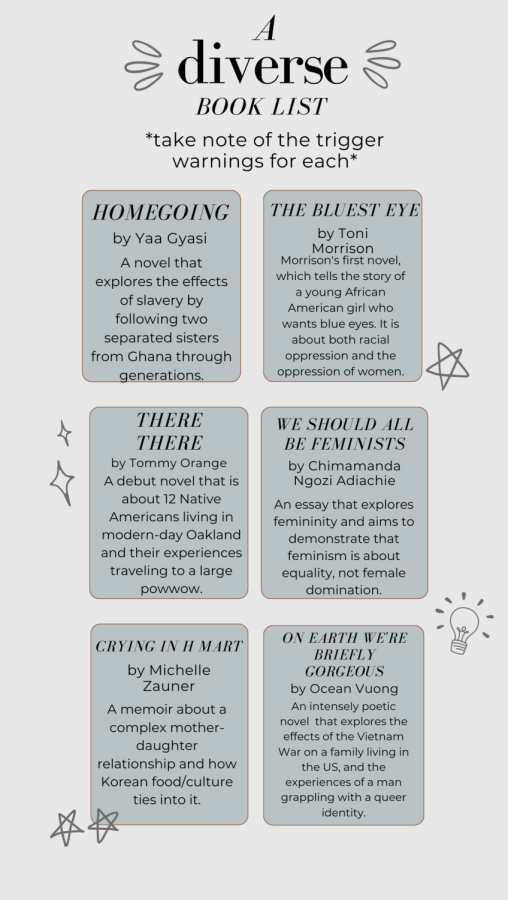A Literary Tragedy
What students are losing by reading euro-centric works
Some of the most widely read high school core texts are novels like “The Catcher in the Rye,” “The Great Gatsby,” “Lord of the Flies” and many of Shakespeare’s plays. What do these all have in common?
They’re written by straight, white, cisgender men and largely feature straight, white, cisgender men.
Even though they do contain important messages, it’s also vital that education expands beyond the traditional Eurocentric curriculum that has been taught for so many years.
Literature is incredibly beneficial when it comes to developing empathy, understanding and respect for different cultures and ethnicities. It allows readers to spend time in someone else’s mind and experience the same emotions, cultivating an appreciation for unique opinions.
If we only read novels and plays written by and about a singular race, culture or gender, we lose the opportunity to engage with and learn about diverse experiences.
At PV High, there are 75 possible books and plays offered as standard curriculum for all four grade levels, found in the Course Handbook.
Each grade level has one required reading book, regardless of whether the English class is a regular, honors, or AP level course. Freshmen read “Romeo and Juliet” by William Shakespeare, sophomores read “Lord of the Flies” by William Golding, juniors read “The Great Gatsby” by F. Scott Fitzgerald and seniors read “Hamlet,” also by Shakespeare.
Combining and excluding “Beowulf,” which was written by an unknown author(s), 20% of the total 74 books are written by women: 15 books. Of 73 books, excluding biracial Malcolm Gladwell’s “Outliers” in addition to “Beowulf,” 15% of the texts are written by non-white authors: 11 books.
Because of the lack of author diversity, we don’t get to learn as much about the effect of slavery in the south, of the nationwide legalization of abortion in the 70s (and the recent loss of the right), of Japanese internment camps in California during WWII, of the AIDS epidemic in the 80s, of the cultural traditions of modern Native Americans and so many other stories that are necessary to the history of our world and its people.
Instead, we’re learning about an angsty teen in New York City and a wealthy, obsessive man who can’t get over his former lover in the midst of the Roaring Twenties.
This doesn’t mean we should completely eradicate the male-written, Eurocentric works from school curriculums—they still examine significant themes and messages. But we do need to start making space for other cultures, ethnicities and gender or sexual identities if we want to build a community that respects and appreciates one another.
